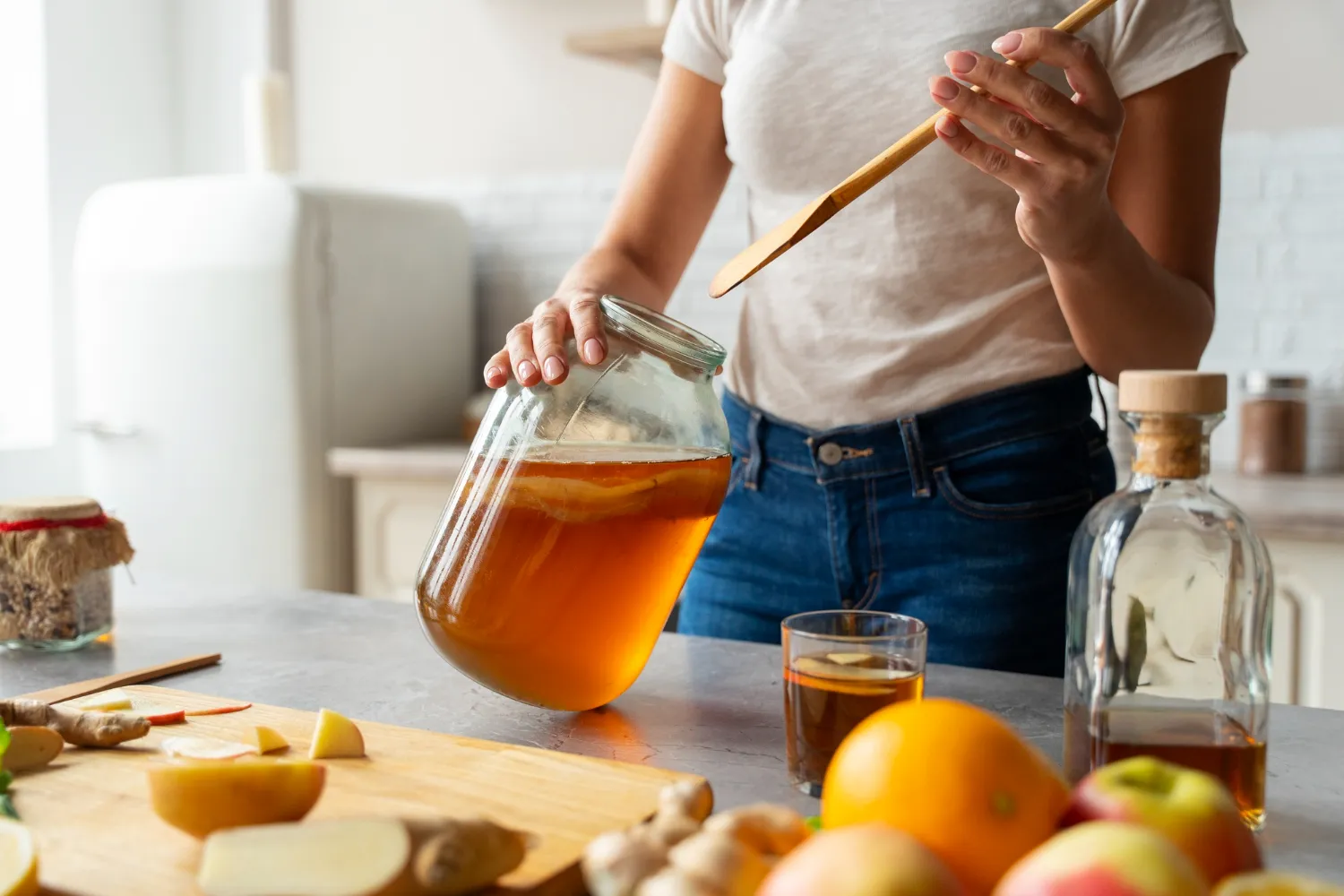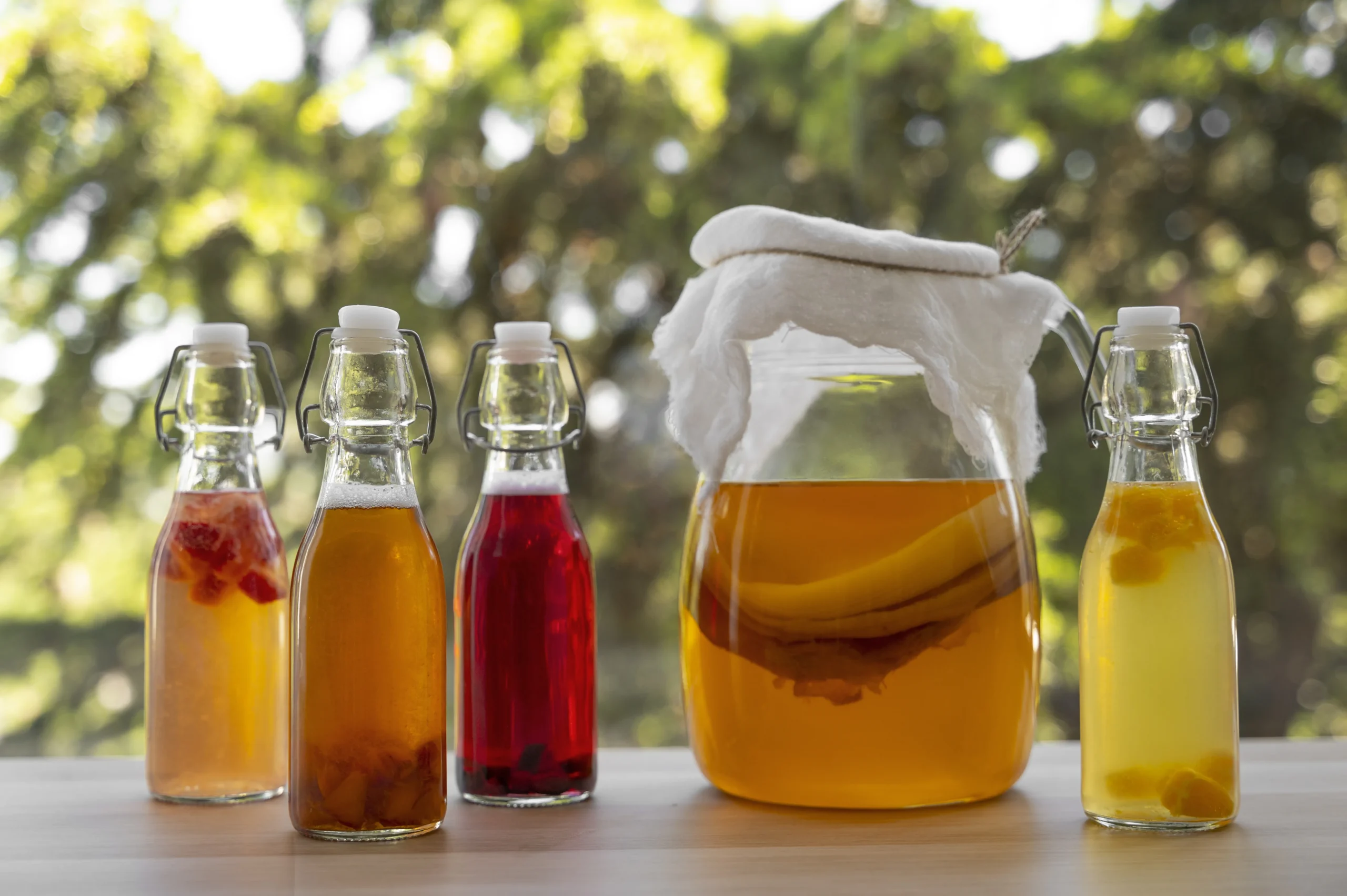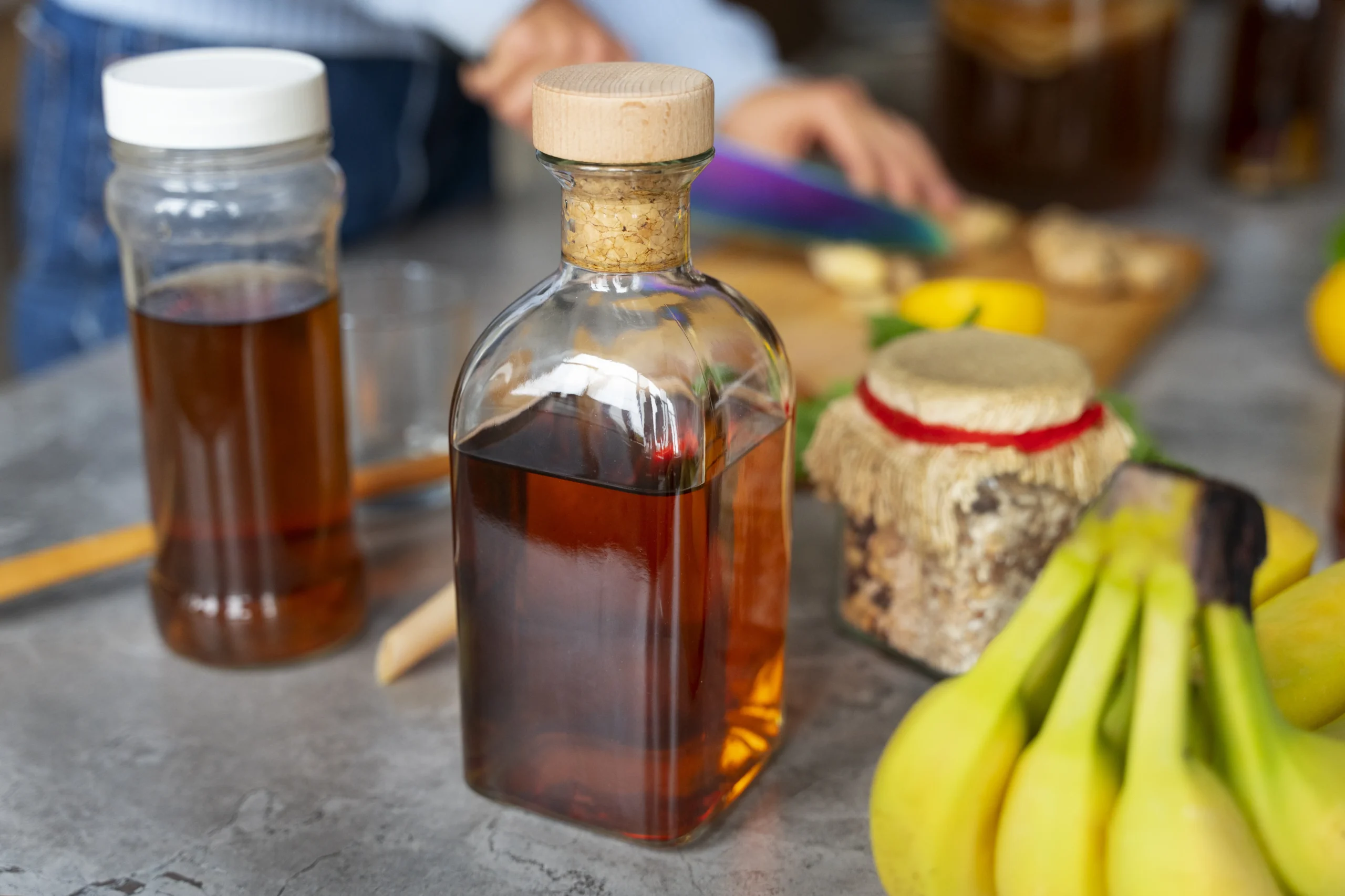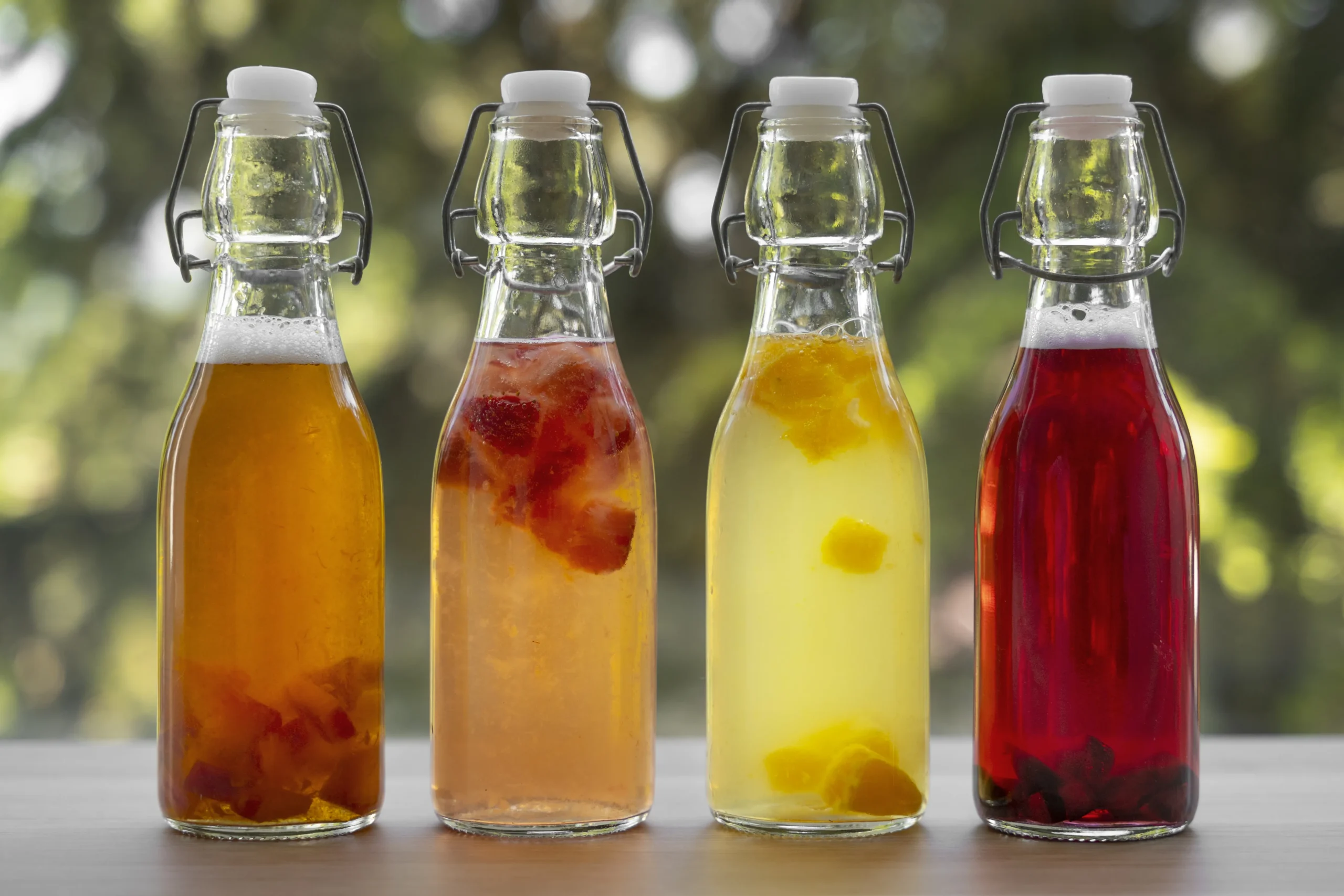Flavored vinegar is an essential ingredient that adds a lively, fragrant boost to your recipes. By blending plain vinegar with herbs, fruits, spices, or a mix of all three, you craft a versatile kitchen staple that can elevate salad dressings, marinades, beverages, and even desserts.
Flavored or infused vinegars have been cherished across cultures for centuries, celebrated for their ability to deepen flavors and offer potential health benefits. Whether you choose a store-bought variety or craft your own at home, flavored vinegar opens the door to endless kitchen creativity. For more tips and creative ideas, dive into this guide to making flavored vinegars.
Print
Homemade Flavored Vinegar (Herb, Fruit, and Spice Infusions)
- Total Time: 10 minutes (plus infusion time)
- Yield: About 2 cups
- Diet: Vegan
Description
Flavored vinegar is a customizable, aromatic ingredient that brings a burst of flavor to salads, marinades, cocktails, and even desserts. Whether infused with fresh herbs, sweet fruits, or warm spices, this homemade vinegar elevates everyday dishes while offering potential health benefits. It’s easy to prepare, store, and use across a variety of cuisines.
Ingredients
- 2 cups white wine vinegar or apple cider vinegar
- 1 cup fresh fruit (e.g., raspberries, sliced apples, or citrus peels)
- 1–2 sprigs fresh herbs (e.g., rosemary, thyme, basil, mint)
- 2–3 whole spices (e.g., cinnamon sticks, garlic cloves, ginger slices, chili peppers)
- 1 sterilized glass jar with lid (for infusing)
- 1 sterilized bottle (for storage)
Instructions
- Clean and prep ingredients: Rinse fruits, herbs, and spices thoroughly and pat dry. Slightly crush fruits or slice thick items like ginger to release flavor.
- Combine in jar: Place your choice of ingredients (fruit, herbs, spices) into the sterilized jar.
- Add vinegar: Pour vinegar over the ingredients, ensuring they are fully submerged.
- Seal and store: Close the jar tightly and store in a cool, dark place. Gently shake the jar every 2–3 days.
- Infuse: Allow to infuse for 1–2 weeks for cold infusion or heat gently on the stove for 5–10 minutes for quick infusion. Let cool.
- Strain and bottle: Once infused, strain out solids and pour into a clean, sterilized bottle with a tight-fitting cap.
- Use and store: Use in salad dressings, marinades, beverages, or desserts. Store in a cool pantry or refrigerate after opening.
Notes
- Use frozen fruits if fresh is unavailable—thaw before infusing.
- Combine flavors like raspberry + ginger or garlic + rosemary for layered taste.
- Always sterilize jars and bottles to prevent spoilage.
- Ideal vinegar base: white wine vinegar for neutral flavor or apple cider vinegar for fruitiness.
- Prep Time: 10 minutes
- Cook Time: 0 minutes (or 10 minutes if using heat method)
- Category: Condiment
- Method: Infused
- Cuisine: Global
Types of Flavored Vinegars: Creative Infusions with Herbs, Fruits, and Spices
Flavored vinegar comes in many styles, created by infusing vinegar with herbs, fruits, or spices. Each version brings new flavor dimensions to every meal.
Herb-Infused Vinegar: Fresh Ideas for Flavored Vinegar
Herb-based flavored vinegar is made by steeping ingredients like rosemary, thyme, basil, or oregano. It brings herbal notes that lift salads, roasted meats, and sauces with simple depth.
Fruit-Flavored Vinegar: Sweet and Bright Flavored Vinegar
Fruit-infused flavored vinegar blends sweetness with tang. A raspberry-based vinegar brings freshness to leafy greens, soft cheeses, and crunchy nuts.
Spice-Infused Vinegar: Bold Flavored Vinegar Inspirations
Spice-driven flavored vinegar features cinnamon sticks, slices of ginger, garlic cloves, chilies, or warm cloves. It adds bold, aromatic depth to sauces, marinades, and a variety of cooked dishes.
Creative Flavored Vinegar Blends
Raspberry and ginger blended into flavored vinegar add lively character to desserts, cocktails, and fruit-forward plates.

Health Benefits of Flavored Vinegar: Boosting Nutrition and Supporting Digestion
Flavored vinegar not only adds flavor to dishes but also offers important health benefits.
The acetic acid in flavored vinegar can enhance stomach acid production and stimulate digestive enzymes, helping improve nutrient absorption, particularly for those with slower digestion. Flavored vinegar may also contribute to better blood sugar management. Research shows that taking vinegar before meals rich in carbs can slow sugar absorption and help stabilize blood sugar levels.
Flavored vinegar made with fruits and herbs often contains antioxidants that protect cells from free radicals, helping to strengthen the immune system and lower inflammation. It may also aid in weight control, as vinegar can increase feelings of fullness and reduce overall calorie intake. Gut health benefits from flavored vinegar too, especially when it includes ingredients like ginger or garlic, which may offer probiotic-like support.
Culinary Uses for Infused Vinegars: How to Use Flavored Vinegar in Cooking and Drinks
Flavored vinegar is a versatile kitchen staple. It effortlessly adds bold flavor to salad dressings, marinades, beverages, and desserts.
Homemade Flavored Vinegar for Salad Dressings: Craft the Perfect Vinaigrette
This is key to making vibrant vinaigrettes. Mix fruit-flavored vinegar with olive oil, Dijon mustard, and honey to create a vibrant dressing that brightens any salad. Raspberry vinegar is a perfect match for spinach, goat cheese, and walnuts. Citrus-infused vinegar creates a bright vinaigrette when mixed with orange zest and olive oil.
Using Infused Vinegar in Marinades and Sauces: Bold and Flavorful Results
Flavored vinegar brings deep flavor and tender texture to cooking. Herb-infused options like rosemary-thyme vinegar work well to soften meat or tofu while adding rich notes. Mix it with garlic, olive oil, and soy sauce for a fast, flavorful marinade. Chili-flavored vinegar adds a spicy boost to stir-fries and barbecue sauces. Garlic-infused vinegar creates a bold start for marinades, especially for grilled vegetables.
Crafting Cocktails, Shrubs, and Beverages with Flavored Vinegars
Flavored vinegar opens creative options for drinks. It forms the base of shrubs, a simple blend of vinegar, sugar, and water. These shrubs mix easily with soda water for fresh mocktails or add complexity to cocktails like whiskey sours. A ginger-flavored vinegar shrub brings a spicy lift to sparkling water or crafted cocktails.
Baking and Desserts with Fruit-Infused Vinegar: Sweet Meets Tangy
Fruit-Spiced Vinegar brings a lively, refreshing note to sweet dishes. Drizzle raspberry vinegar over vanilla ice cream for a delicious burst of contrast. Blend citrus-Spiced Vinegar into cake batters to add a light, tangy spark. To finish gourmet desserts, reduce strawberry-infused balsamic into a silky sauce and drizzle it over panna cotta or cheesecake. The sharpness of the vinegar balances the richness, creating a smooth, rounded flavor.

How to Make Infused Vinegar at Home: DIY Flavored Vinegar Guide
Creating Spiced Vinegar at home is easy and brings fresh, custom flavors to your kitchen.
Selecting Ingredients for Herb-Infused, Fruit-Flavored, and Spiced Vinegars
High-quality, fresh ingredients create the best Spiced Vinegar. Choose herbs like mint, thyme, and basil, or fruits such as raspberries, apples, and citrus peels. For bold notes, add cinnamon sticks, ginger slices, or chili peppers. Always rinse ingredients thoroughly to eliminate any dirt or residue.
Infusion Methods for DIY Flavored Vinegar: Step-by-Step Instructions
Start by rinsing and drying your ingredients well. If using fruits, gently press them to release juices. Place the prepared items into a sterilized glass jar. Pour vinegar over them, making sure everything stays submerged. Seal the jar tightly. For cold infusion, store it in a cool, dark spot for one to two weeks, shaking it lightly every few days. For a quicker method, heat the vinegar with the ingredients on low for five to ten minutes, then cool before bottling.
Storing Flavored Vinega
Once infused, pour the vinegar through a strainer into a clean, sterilized bottle. Use an airtight cap to keep it fresh. Store Spiced Vinegar in a dark, cool pantry or refrigerate after opening. When properly sealed, it can keep its flavor for six to twelve months.
Popular Flavored Vinegar Recipes
Spiced Vinegar adds layers of taste to a wide range of dishes. These homemade ideas show how simple ingredients can create bold, memorable flavors.
1. Raspberry Vinegar
Raspberry vinegar is bright and versatile, perfect for salads, glazes, and desserts. To make it, combine 1 cup of fresh or thawed raspberries with 2 cups of white wine vinegar. Let the mixture steep for about two weeks, then strain out the fruit. Use the finished vinegar in salad dressings or drizzle it over vanilla ice cream for a fruity touch.
2. Garlic and Herb Vinegar
This savory Spiced Vinegar brings rich flavor to marinades and roasted vegetables. Steep apple cider vinegar with rosemary sprigs, thyme, and a few crushed garlic cloves. Let the infusion develop over 3 to 4 weeks, then strain and bottle. It pairs well with grilled meats and hearty stews, similar to recipes like porcupine soup.
3. Citrus Spice Vinegar
Bursting with vibrant aroma, this Spiced Vinegar infuses rice vinegar with orange peels, cinnamon sticks, and cloves. After two weeks of infusing, it’s ready to glaze roasted meats or to stir into festive holiday drinks. It also makes a lively base for citrus dressings, much like those used in creamy cucumber salad.
4. Chili-Ginger Vinegar
For a bold, spicy touch, infuse white vinegar with sliced ginger and dried chili peppers. Let it rest for about three weeks, then strain and store. This Spiced Vinegarr deepens the flavor of Asian dishes and adds fire to stir-fries, similar to the heat found in Guajillo sauce.
5. Apple-Cinnamon Vinegar
Perfect for autumn recipes, this Vinegar Blend combines apple slices, cinnamon sticks, and cloves in apple cider vinegar. After 2 to 3 weeks of infusion, strain and enjoy in baked goods, vinaigrettes, or seasonal drinks. It pairs beautifully with fall desserts like apple pecan tart.
Each Spiced Vinegar offers a distinct flavor to elevate dressings, marinades, and drinks. To discover more ways to use infused vinegars, explore what is flavored vinegar.

Conclusion
Vinegar Blend provide an easy and wholesome way to enhance your cooking. From herb-infused vinaigrettes to fruity shrubs and spiced marinades, these versatile condiments add bold flavor and countless benefits to your dishes. Start creating your own flavored vinegars at home or explore more infused vinegar techniques for fresh inspiration.
FAQs
What’s the best vinegar for infusions?
White wine vinegar and apple cider vinegar are top choices for making flavored vinegars because of their neutral, mild taste that lets the added flavors shine.
Can frozen fruits be used to make Vinegar Blend?
Absolutely. Just thaw the fruits first to help release their juices and boost the overall flavor of your flavored vinegars.
How long should vinegar be infused?
For cold infusions, allow 1–2 weeks. If using heat, just a few days are enough to create richly flavored vinegars.
What’s the best way to store Vinegar Blend?
Always use sterilized bottles and keep them in a cool, dark place. After opening, refrigerate your flavored vinegars to maintain their quality and extend shelf life.
Are there any safety tips for Infused vinegars?
Yes—make sure both bottles and ingredients are properly sterilized. This simple step prevents contamination and keeps your flavored vinegars safe to enjoy.


3 thoughts on “What Is a Flavored Vinegar?”